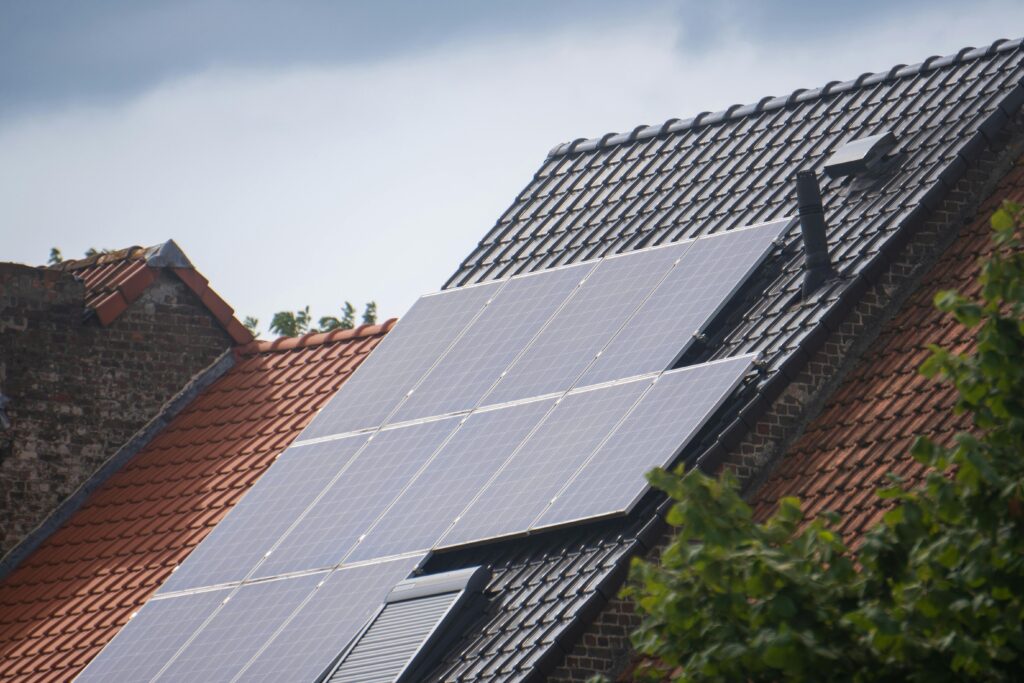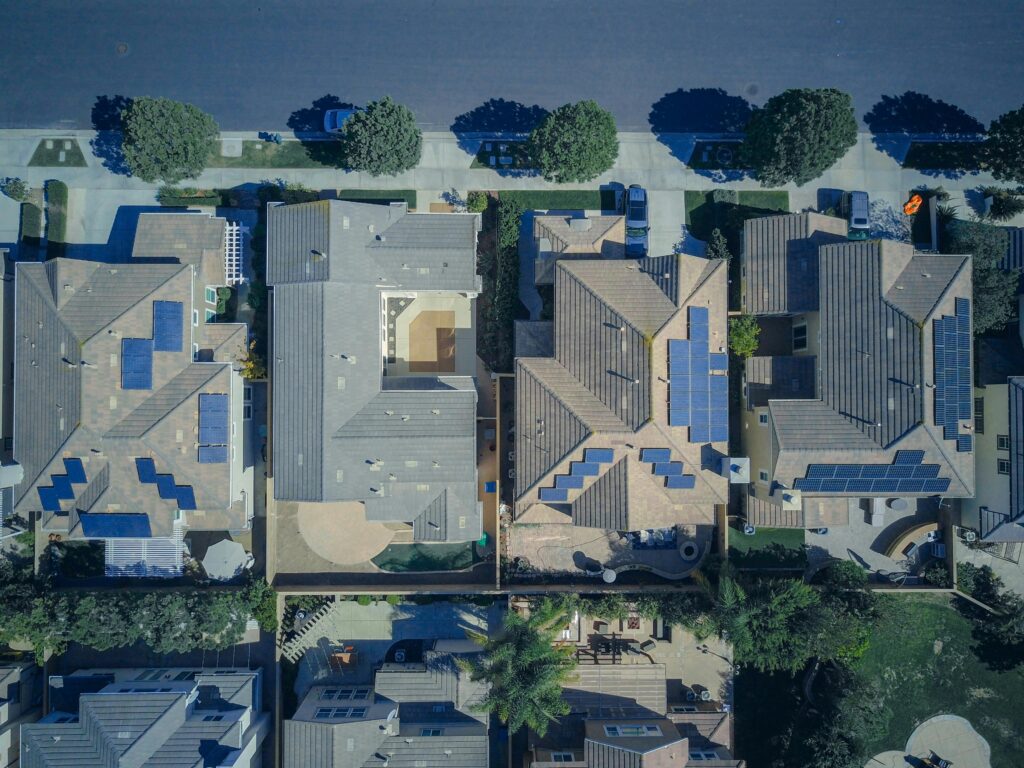In this article, we will dive into the fascinating world of ecological roofing, examining the innovative materials that make these green roofs possible and uncovering the environmental and economic advantages they bring to homeowners and communities alike. Whether you’re an eco-conscious homeowner, an architect, or simply curious about sustainable living options, you’ll learn how choosing the right materials can enhance energy efficiency, reduce carbon footprints, and create healthier living spaces.
Table of Contents
ToggleKey Takeaways
- Eco-Friendly Roofing Matters
- Material Options
- Energy & Cost Savings
- Enhanced Durability
- Installation Essentials
- Environmental & Health Benefits
- Economic Incentives
- Integration with Other Systems
- Long-Term Impact
Why Eco-Friendly Roofing Materials Are More Important Than You Think
In today’s rapidly changing world, where climate change and environmental preservation have become global priorities, the concept of ecological roofing, eco-friendly roofing, has gained immense significance. But what exactly is eco-friendly roofing, and why should homeowners, builders, and businesses care about it?
Eco-friendly roofing refers to the use of sustainable, environmentally friendly materials and techniques in the construction of roofs. These materials can range from recycled metals and sustainably harvested wood to green roofs covered with vegetation. The primary goal is to reduce the environmental footprint of buildings while enhancing durability, energy efficiency, and even aesthetics.
Statistics show just how crucial eco-friendly roofing has become. According to the Environmental Protection Agency (EPA), buildings account for approximately 40% of global energy consumption and 38% of CO2 emissions. Traditional roofing materials often contribute to this energy drain by absorbing heat, leading to higher cooling costs during warm months. On the other hand, eco-friendly roofing materials can reflect more sunlight and store less heat, significantly lowering energy consumption. For example, cool roofs with reflective coatings have been shown to reduce indoor temperatures by up to 10°F, decreasing air conditioning use by as much as 20%.
Beyond energy savings, the benefits of ecological roofing extend to water management and air quality. Green roofs, for instance, absorb rainwater, reducing runoff and the risk of flooding. They also act as natural air filters, trapping pollutants and producing oxygen. A notable example comes from Chicago’s City Hall, where the installation of a green roof has reduced stormwater runoff by about 70%, contributing to the city’s sustainability initiatives.
The story of the Smith family from Oregon illustrates the real-world impact of switching to eco-friendly roofing materials. When they decided to replace their old asphalt roof with a combination of recycled metal panels and a vegetative green roof section, their electricity bill dropped by 30% in just one summer. More importantly, they felt a personal satisfaction knowing their home contributed less to environmental degradation. Their story is one among many that underscores how ecological roofing isn’t just a trend, it’s a vital step toward a healthier planet.
In summary, eco-friendly roofing materials present a compelling opportunity to align building practices with environmental stewardship. Not only do they offer measurable energy and cost savings, but they also contribute to better urban ecosystems and healthier living environments. As the demand for sustainable construction grows, understanding and adopting ecological roofing is more important than ever.
How to Apply Eco-Friendly Roofing Materials Step by Step
When it comes to choosing an eco-friendly roofing , understanding how to properly apply the right materials is key to maximizing both environmental benefits and long-term durability. Whether you are a homeowner aiming to reduce your carbon footprint or a builder committed to sustainable construction, this step-by-step guide will walk you through the process of selecting and installing eco-friendly roofing materials effectively.
Step 1: Assess Your Roof’s Current Condition and Requirements
Before diving into materials, conduct a thorough inspection of your existing roof or roof frame:
– Check structural integrity: Make sure the roof can support the particular eco-friendly materials you want to use, such as heavier green roofs or solar tiles.
– Evaluate insulation and ventilation needs: Eco-friendly roofs often work in tandem with enhanced insulation and airflow to optimize energy savings.
– Determine climate suitability: Some materials perform better in wet climates (like metal or slate), while others are ideal for arid environments (such as clay tiles).
Taking these factors into account will guide you towards the most suitable materials and installation methods.
Step 2: Choose the Appropriate Eco-Friendly Roofing Materials
Selecting the right ecological roofing materials means focusing on sustainability, durability, and local availability. Here are some popular options:
1. Recycled Shingles
Made from recycled rubber, plastic, or wood fiber, these shingles reduce landfill waste while providing a durable, weather-resistant surface.
2. Metal Roofing
Metal roofs, especially those made from recycled aluminum or steel, have high reflectivity and can often be recycled at the end of their long lifespan.
3. Clay and Concrete Tiles
Both offer longevity and natural thermal regulation, reducing heating and cooling costs.
4. Green Roof Systems
Incorporating living plants provides insulation, absorbs rainwater, and promotes biodiversity while cooling your home naturally.
5. Solar Tiles
Integrate seamlessly with traditional roof materials and generate renewable energy, contributing to energy independence.
Step 3: Prepare the Roof Surface
Proper preparation is essential to ensure the eco-friendly roofing materials adhere correctly and function as intended:
– Clean the Roof Surface: Remove debris, old roofing material, and dirt.
– Repair Damages: Fix leaks, cracks, or structural issues.
– Install an Underlayment: Utilize eco-friendly underlayment materials such as recycled felt or synthetic membranes that offer moisture barriers.
By laying a solid foundation, you improve the longevity and effectiveness of your ecological roofing.
Step 4: Install the Eco-Friendly Roofing Materials
Depending on your material choice, the installation process will vary. Here is a generalized approach for several common options:
– Recycled Shingles and Tiles:
– Begin from the lowest edge of the roof.
– Align and nail the shingles/tiles securely following manufacturer guidelines.
– Overlap appropriately to ensure waterproofing.
– Metal Roofing:
– Attach metal panels with screws, making sure to include thermal expansion gaps.
– Seal joints with eco-friendly sealants.
– Green Roofs:
– Install waterproof membrane layers.
– Place root barriers to prevent structural damage.
– Add drainage layers followed by lightweight soil.
– Plant native vegetation suited to your climate.
– Solar Tiles:
– Coordinate with certified solar installers.
– Follow specific guidelines for electrical wiring and tile placement.
– Integrate the solar system with your home’s energy system.
Step 5: Post-Installation Care and Maintenance
Maintaining your ecological roofing extends its life and maximizes benefits:
– Regular Inspections: Twice yearly, check for wear or damage.
– Clean Gutters and Drainage Systems: Prevents water accumulation that can deteriorate the roofing.
– Prune Surrounding Vegetation: Reduces debris buildup.
– Monitor Plant Health on Green Roofs: Replace any dying plants and control pests naturally.
Final Thoughts
Implementing ecological roofing isn’t just a choice, it’s a commitment to environmental stewardship and sustainable living. By following this detailed, step-by-step approach to selecting and applying eco-friendly roofing materials, you set yourself up for a home that’s energy-efficient, durable, and beautifully integrated with nature.
Remember, the key to success lies in understanding the unique requirements of your building, researching material options thoroughly, and partnering with skilled professionals when needed. With these steps, your eco-friendly roof will not only protect your home but also help safeguard the planet.
Tips for Embracing Eco-Friendly Roofing Materials and Their Benefits 🌿🏡:
✅ Choose Sustainable Materials: Opt for eco-friendly materials like recycled metal, bamboo shingles, or clay tiles to reduce environmental impact.
✅ Prioritize Energy Efficiency: Select roofing that reflects sunlight and improves insulation, such as cool roofs or green roofs, to save on energy bills.
✅ Use Recycled Content: Incorporate recycled materials in your roof to minimize waste and promote circular use of resources.
✅ Consider Durability: Invest in long-lasting roofing materials to reduce the frequency of replacements and decrease landfill waste.
✅ Opt for Local Sources: Sourcing materials locally lowers transportation emissions and supports local economies.
✅ Install Green Roof Systems: Plant-based roofing parks improve air quality, regulate building temperatures, and enhance biodiversity.
✅ Ensure Proper Installation: Quality installation maximizes material lifespan and eco benefits, preventing leaks and energy loss.
✅ Plan for Rainwater Harvesting: Integrate systems that collect rainwater from your roof for garden irrigation or household use.
❌ Avoid Toxic Materials: Stay clear of roofing components that release harmful chemicals or are challenging to recycle.
💡 Extra Tip: Combine eco-friendly roofing with solar panels to boost your home’s sustainability and energy independence.

Key Concepts
Understanding the concept of a green roof or eco-friendly roofing requires delving into the very essence of how architecture and nature can intertwine harmoniously. Imagine a building’s roof not as a barren, lifeless slab but as a blossoming garden, a living system that breathes, grows, and nurtures. This is the heart of what an eco-friendly roof, or in the context of “ecological roofing”, means. It’s a blend of materials and design principles that transform ordinary roofing into a sustainable, energy-efficient, and environmentally beneficial structure.
Defining Eco-Friendly Roofing
At its core, an eco-friendly roof breaks away from traditional roofing models dominated by asphalt shingles or metal sheets. Instead, it embraces materials that are renewable, recyclable, non-toxic, or obtained with minimal environmental impact. These materials serve multiple ecological functions: reducing heat absorption, filtering rainwater, providing insulation, and even creating habitats for flora and fauna.
Think of an eco-friendly roof as a living skin for the building, one that adapts and responds to its surroundings, much like how the skin regulates body temperature. The incorporation of natural or recycled substances in the roofing system helps mimic natural ecosystems, enhancing urban biodiversity and decreasing the ecological footprint of human constructions.
The Material Palette of Eco-Friendly Roofs
To grasp the variety and significance of materials used in a green roofing system, picture an artist’s palette filled not with paints but with elements sourced thoughtfully from the environment and industry:
– Organic Layering: Materials such as soil, mosses, sedum, grasses, and even small shrubs are commonly used to create the vegetative layer on a green roof. This top layer sustains life and requires substrates that balance moisture retention with drainage, acting like a natural sponge.
– Recycled Components: Roofs may incorporate recycled rubber, reclaimed wood, or repurposed plastics shaped into shingles or membrane layers. These materials symbolize the circular economy, where waste finds new life instead of becoming landfill.
– Natural Insulation: Materials like cork, sheep’s wool, or cellulose enhance thermal performance. Metaphorically, these substances wrap the building in a warm, breathable blanket, reducing the need for artificial heating or cooling.
– Reflective and Permeable Surfaces: Certain eco roofs use light-colored or reflective membranes made from environmentally friendly polymers, reflecting sunlight as a mirror would reflect heat. Some layers are engineered to allow water vapor to escape, preventing moisture buildup, much like how a living leaf breathes.
The Multifaceted Benefits of Eco-Friendly Roofs
The ecological and practical benefits of a ecological roofing extend beyond the simple act of covering a building. They function as systems that engage with the environment in meaningful ways, analogous to small urban oases perched on top of human habitats.
– Thermal Regulation: An eco-friendly roof acts like an insulative shield, buffering the building against extreme temperatures. It’s reminiscent of how a forest canopy cushions the ground below, blocking intense sunlight while preserving warmth during cooler times.
– Stormwater Management: These roofs absorb rainfall, reducing runoff, much like a sponge soaking up water, thereby mitigating urban flooding and decreasing pressure on municipal drainage systems.
– Air Quality Improvement: Vegetation on roofs filters airborne pollutants and can even sequester carbon dioxide, functioning as miniature lungs amidst the concrete jungle.
– Extended Roof Longevity: By shielding conventional roofing materials from UV radiation and temperature fluctuations, eco-roofs often prolong the lifespan of underlying structures, analogous to a sun hat protecting delicate skin from harsh rays.
– Biodiversity Enhancement: When carefully planned, these roofs become habitats for pollinators and small wildlife, weaving green threads through urban fabric that otherwise isolates nature.
The Psychological and Social Dimensions
Beyond hard science, eco-friendly roofs also carry symbolic and emotional weight. They represent a conscious choice to intertwine human industry with natural cycles, a silent but potent statement of sustainability. Walking past a building topped with lush plant life can evoke a sense of calm and connection, like stumbling upon a hidden garden in the midst of a bustling city.
In this sense, the ecological roofing transcends its materiality to become a narrative device, telling stories of resilience, hope, and adaptation against the backdrop of environmental challenges. It underscores the possibility of coexistence, reminding us that even the most utilitarian structures can embrace life and contribute positively to their surroundings.
Summing Up the Essence
The term techumbre ecológica materiales y beneficios encapsulates a comprehensive, multi-layered philosophy: the convergence of eco-conscious materials and purposeful design that creates roofing not just to protect but to prosper. It calls for a deep appreciation of both the tangible substances involved and the intangible ecological and societal impacts they engender.
By seeing roofs as vibrant ecosystems rather than inert barriers, this approach offers a paradigm shift in how we build, inhabit, and relate to our environment, a rooftop revolution rooted in nature’s enduring wisdom.
Frequently Asked Questions
❓ What are common eco-friendly roofing materials?
Eco-friendly roofing materials include options such as recycled metal, clay tiles, green roofs with vegetation, solar shingles, and reclaimed wood. These materials are sustainable and reduce environmental impact.
❓ What are the main benefits of choosing eco-friendly roofing materials?
The benefits of eco-friendly roofing materials include improved energy efficiency, reduced carbon footprint, longer lifespan, and lower maintenance costs. They also contribute to better insulation, lowering heating and cooling expenses.
❓ How do eco-friendly roofing materials impact the environment?
Eco-friendly roofing materials help reduce waste, minimize resource consumption, and decrease greenhouse gas emissions. For instance, recycled materials use less energy to produce, and green roofs absorb rainwater and purify the air.
❓ Are eco-friendly roofing materials more expensive than traditional options?
While the initial cost of eco-friendly roofing materials can be higher, the long-term savings through energy efficiency and durability often offset this. Additionally, many regions offer incentives for installing sustainable roofs.
❓ Can eco-friendly roofing materials be installed on any type of building?
Yes, eco-friendly roofing materials are versatile and can be adapted to various building styles and climates. However, it is essential to consult with roofing professionals to choose the best materials for your specific needs.



2 Responses